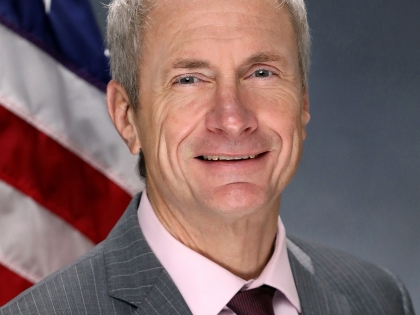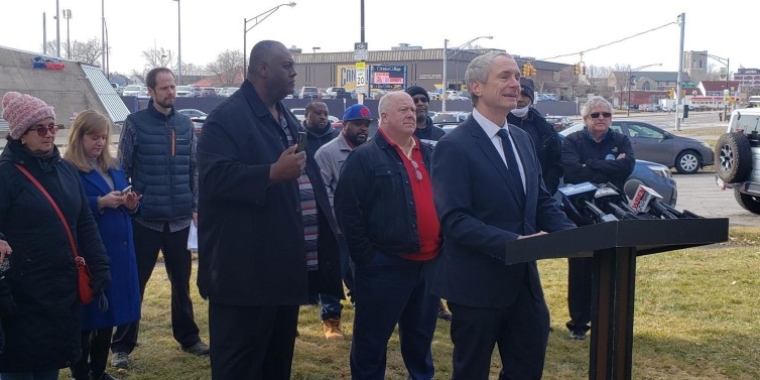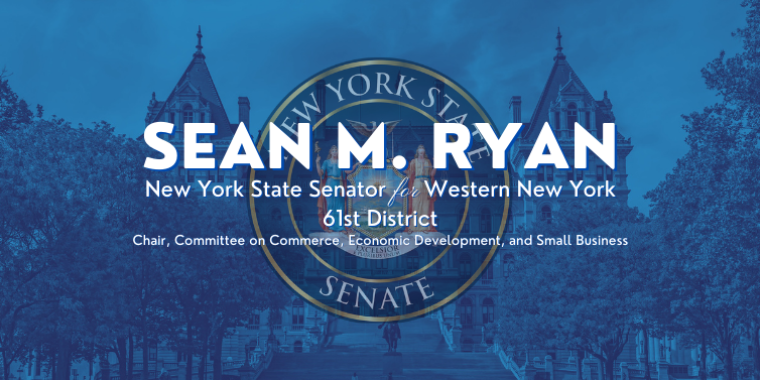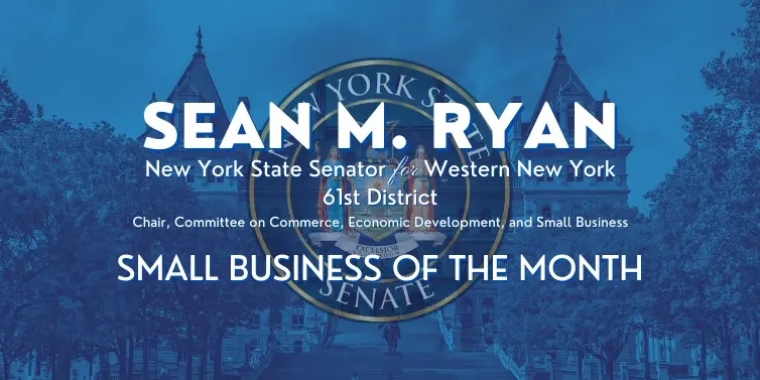
Senator Ryan Reveals NFTA Bus Drivers Are Paid Significantly Less Than Other Upstate Transit Drivers – Demands NFTA Increase Wages And Restore Bus Routes
March 11, 2022

SENATOR RYAN REVEALS NFTA BUS DRIVERS ARE PAID SIGNIFICANTLY LESS THAN OTHER UPSTATE TRANSIT DRIVERS – DEMANDS NFTA INCREASE WAGES AND RESTORE BUS ROUTES
NFTA Has Failed to Properly Compensate Bus Drivers in the Last 20 Years Despite Significant Increases in State Funding
Bus Driver Shortage is a Result of Low Wages and Poor Benefits – NFTA Must Pay Competitive Wages to Attract Drivers and Restore Bus Routes
BUFFALO – Today, March 11, 2022, New York State Senator Sean Ryan joined local stakeholders to highlight the failure of the Niagara Frontier Transportation Authority (NFTA) to properly compensate bus drivers, which has led to a driver shortage that has caused service cutbacks across Erie and Niagara Counties.
In February, the NFTA announced bus service interruptions caused by a shortage of drivers, including fewer routes on evenings and weekends. The announcement included the suspension of eight of the NFTA’s 12 express routes, with routes serving Buffalo’s East Side, Cheektowaga, Hamburg, Lancaster, Lockport, Niagara Falls, Tonawanda, and Williamsville being canceled temporarily. Three of the remaining four express routes were transitioned to reduced schedules.
Though the NFTA has blamed the COVID-19 pandemic for the driver shortage, compensation appears to be a driving factor. The starting wage for NFTA bus drivers is $16.33 per hour. New drivers at the Rochester-Genesee Regional Transportation Authority ($21.79/hour) and the Central New York Regional Transportation Authority in Syracuse (21.60/hour) make roughly 33% more than their counterparts in Buffalo. NFTA drivers only earn the top rate of $26.72 per hour – which also falls well short of the top rate available to drivers in Rochester ($34.59) – after five years of service.
According to research by the Cornell ILR Buffalo Co-Lab, when adjusting for inflation, NFTA drivers earning that top rate actually earn less than they did 20 years ago. The study also found that the drivers have significantly fewer health insurance benefits than they did 20 years ago despite a recent change that added an obligation to pay 11% of the cost of their health care plan.
The NFTA has claimed an inability to pay higher wages, but New York State has significantly increased the amount of annual funding provided to the NFTA in the last seven years. In 2015, the NFTA received a total of $48,734,300 in state funding. Last year, the NFTA received a total of $59,186,600 in state funding – an increase of $10,452,300, or more than 21%, from 2015.
Senator Sean Ryan said, “The NFTA says there is nothing they can do about route cuts that are affecting the people they are supposed to serve, but they know how to solve this problem. If they really want to hire more drivers, they need to pay a competitive wage. New drivers in other Upstate cities make over $11,000 more per year than what the NFTA is offering for a 40-hour work week. For years, they have driven down wages even as the state has increased their funding. Now it’s time for the NFTA to pony up and stop leaving Western New Yorkers out in the cold.”
Council Member Mitch Nowakowski said, “I look forward to working with NFTA leadership and the public to address the vulnerabilities in the organization. We must strengthen our transit network in Western New York. Restoration, and in fact expansion, of our public transit system will be a crucial element for the region's economic growth and sustainability.”
Russell Weaver, Director of Research at Cornell ILR Buffalo Co-Lab, said, “Between 2003 and 2009, NFTA drivers received annual 3% pay increases that kept their purchasing power more or less consistent. But, once their contract expired, drivers went seven years without a raise. On paper, today’s wages have brought drivers back to roughly the same purchasing power they had before; however, under new rules that require them to contribute more to their health insurance policies, most drivers are still taking home about 5% less than they used to. The bottom line is that existing drivers haven’t been made whole for the purchasing power they lost without a contract; and new drivers are starting at wages that aren’t competitive with other upstate cities like Rochester and Syracuse.”
Jeffrey Richardson, President of ATU Local 1342, said, “The NFTA has labeled these union workers ‘essential’ and called them heroes, but they do not pay or treat them as such. It's time to treat the men and women right who have worked tirelessly – before the pandemic and all through the pandemic – to ensure that Erie County passengers get the best transportation possible.”
###
Share this Article or Press Release
Newsroom
Go to NewsroomState Legislators Celebrate Next Step In Relocating Da Vinci High School
November 14, 2023

Senator Ryan 2023 Veteran Hall of Fame
November 11, 2023

